The new cooler of the Founders Edition relies instead of the radial fan on two 8.5 cm axial fans with 13 rotor blades each. The actual housing consists of a material mix of aluminium sheet, ABS and aluminium casting and cannot be completely disaseed, at least not without force or special expertise. Both cards also have a similar cooler, which net without thermal pads brought 935 grams on the GeForce RTX 2080 FE and 948 grams on the GeForce RTX 2080 Ti FE.
I removed the backplate and the board and did not disassemble the cooler for time reasons. thinks about how it could be completely dismantled. Since others had the same problem, I asked Nvidia. The answer was as usual precise imprecise:
"We don't want to encourage guys to do this though because of concerns they break something"
Ok, that's it… Well, yes. By now, however, we also know that Nvidia has glued part of the upper radiator cover in the middle and you would need a hot air hairdryer to replace all of this. Let's consider the good piece only from below:
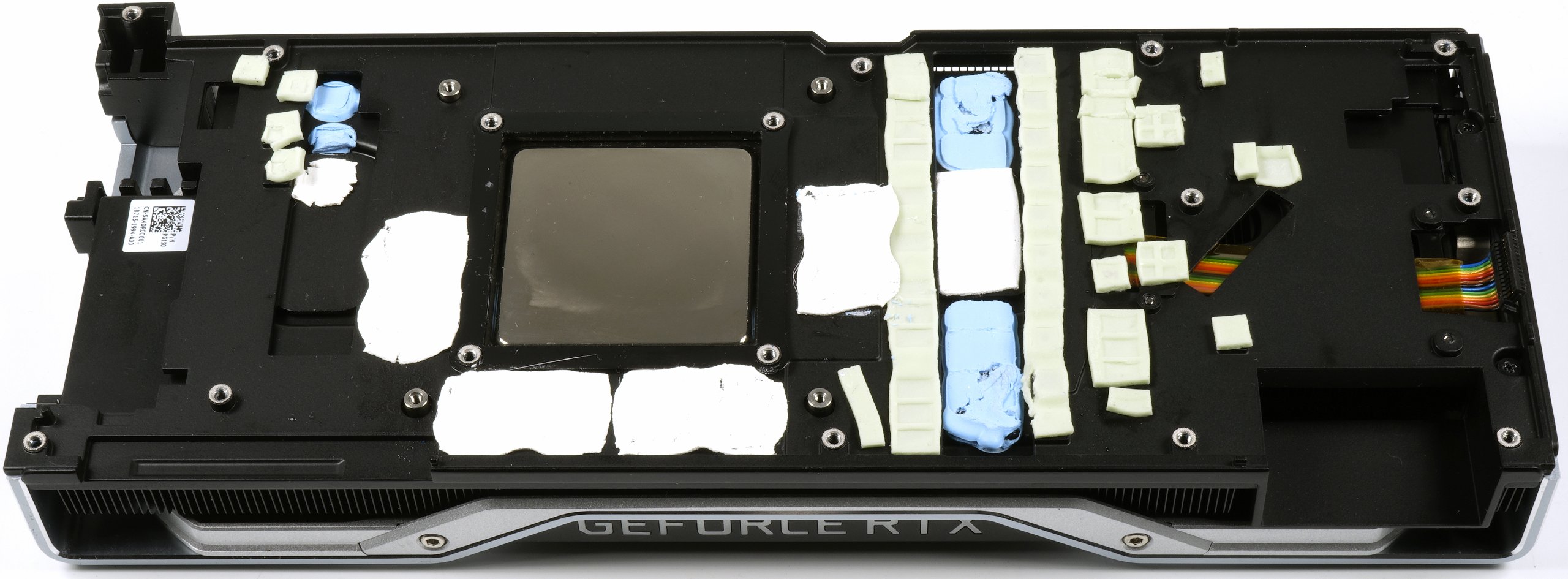
The radiator base of the larger aluminium casting card differs somewhat due to the different board layout, which probably explains the small difference in weight. The upper structure with vapor-chamber, cooling fins and fans is then identical again.
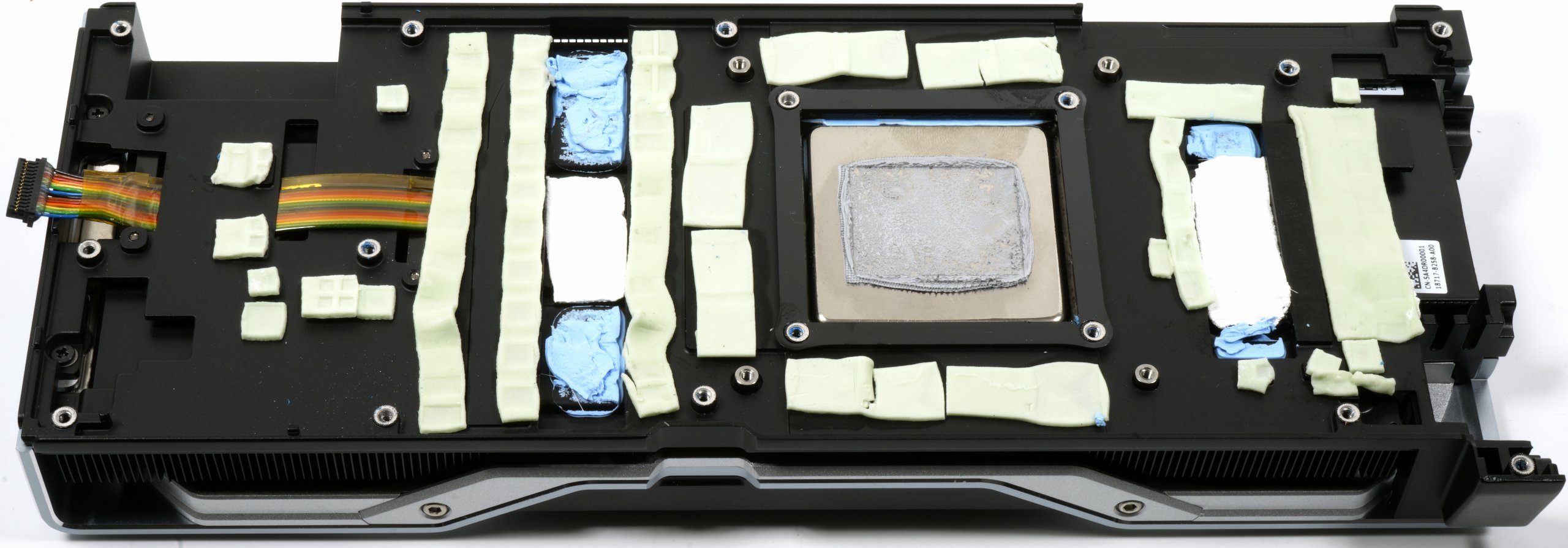
Nvidia includes the backplate in the cooling concept, which is good and important. Especially behind the memory modules, you can dissipate some heat by means of suitable thermal guide pads. However, the large pad below the GPU could have been saved. Laboratory measurements for me could not prove any difference with and without a pad, on the contrary. A fully heated backplate may be even hotter than the area below the GPU socket! But then the backplate heats up the board with a little bad luck even over the pad.

Also with the backplate there are board-related differences between the two cards in the folding and the positioning of the thermal guide pads, as you can clearly see:

| Cooling system at a glance | |
|---|---|
| Type of cooler: | Air |
| GPU Cooling | Vapor Chamber |
| Cooling fins: | Aluminum, vertical alignment, not inclined |
| Heatpipes | Vapor Camber |
| VRM cooling: | About the mounting frame |
| RAM cooling | About the mounting frame |
| Fan: | 2x 8.5 cm fan modules (9 cm opening), 13 rotor blades no semi-passive regulation |
| Backplate | yes, with cooling function |
Fan speeds and noise ("volume")
A semi-passive mode has not been dispensed with, which is also easily feasible at 17 watts in the idle. Nvidia chose the fan curve rather conservatively. After a very short period of constant cooling during the warm-up phase, the speeds later rise significantly above 68 degrees. We also clearly see how sensitive the card is to a closed housing. In order to keep the temperatures at the same level as possible, the fans in the closed housing must always rotate significantly higher even when reaching the target temperature.
This statement of course also applies to the GeForce RTX 2080 Ti FE, because it is a very similar cooler:
By the way, the card has no reserves to make the fans rotate lower, but you could get it a little louder (and cooler) to get higher boost clock rates when overclocking. But do you really want that? Let's look at the table again in direct comparison:
| GeForce RTX 2080 FE |
GeForce RTX 2080 Ti FE |
|
|---|---|---|
| Fan speeds Open Benchtable Maximum | 1907 rpm (Gaming, Peak) | 2136 rpm (Gaming, Peak) |
| Fan speeds Open Benchtable Average | 1887 rpm (warmed up) | 2122 rpm (warmed up) |
| Fan Speeds Closed Case Maximum | 1959 rpm (Gaming, Peak) | 2281 rpm (Gaming, Peak) |
| Fan Speeds Closed Case Average | 1942 rpm (warmed up) | 2274 (warmed up) |
| Noise Emission (Air) Average | 39.6 dB(A), Closed Case | 41.9 dB(A), Closed Case |
| Noise Emission (Air) Idle | 31.3 dB(A) | 31.8 dB(A) |
| Sound characteristic / hearing impression | rather noisy, hardly lower-frequency shares | rather noisy, hardly lower-frequency shares |
The GeForce RTX 2080 FE remains relatively unexcited over the entire frequency band and the fans create a rather pleasant space. The engine noises produce a certain speed-dependent peak, which can be clearly seen in the spectrum. The same applies, of course, to both cards with these fans. With the GeForce RTX 2080, by the way, I still see a speed-unsuspended peak just above the motor peak, which I could not pinpoint exactly. But you can only measure it, not really hear it.
The side noises of the voltage transformers are visible, but almost sink in the sound carpet. The achieved value of just under 40 dB(A) is certainly good for a dual-slot card, but also not really quiet, but significantly quieter than a GeForce GTX 1080 Ti FE with similar power dissipation.
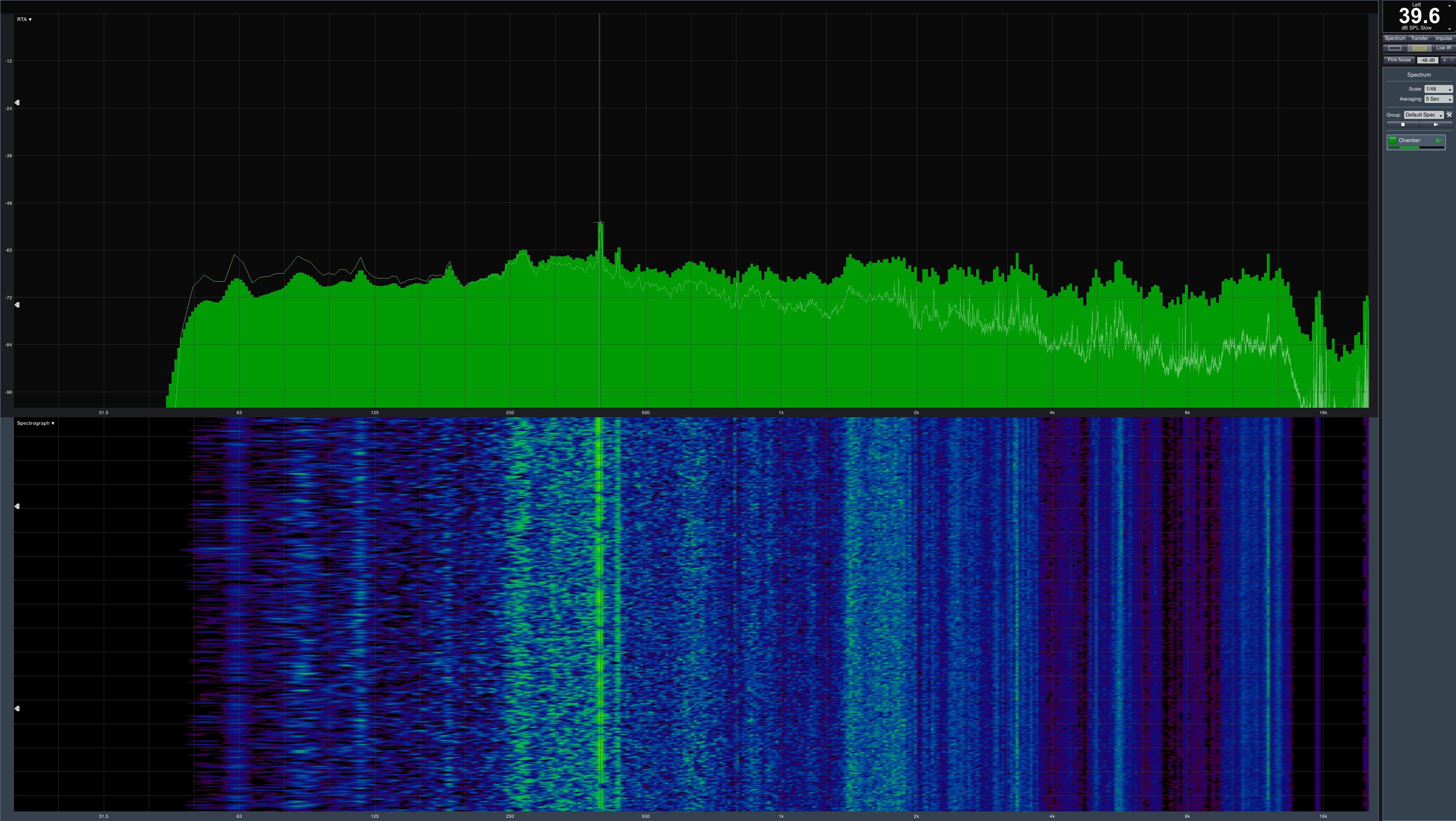
The GeForce RTX 2080 Ti has to disperse another 55 watts more, which can then (unfortunately) be perceived more clearly. The almost 42 dB(A) are not yet a real vacuum cleaner, so fair you have to stay. But it's not really quiet anymore. But even Nvidia can't reinvent physics – that's an incontrovertible fact to accept. With two slots and a flat cooler, it just doesn't get any better.
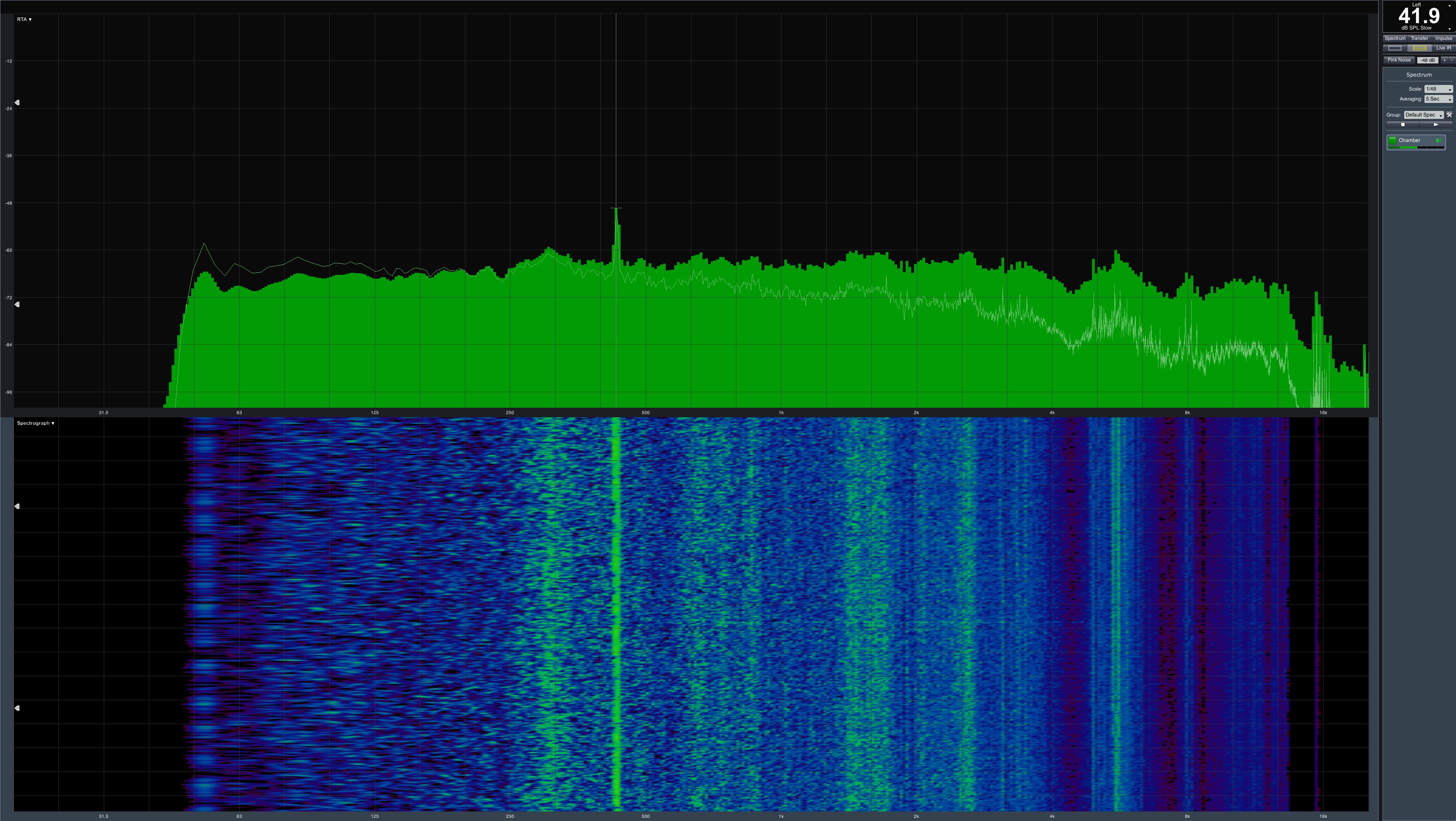
- 1 - Einführung, Unboxing, Daten
- 2 - RTX 2080 Ti - Platinenanalyse
- 3 - RTX 2080 - Platinenanalyse
- 4 - Raytracing in Echtzeit
- 5 - Deep Learning Super Sampling (DLSS)
- 6 - High Dynamic Range (HDR)
- 7 - Ashes of the Singularity: Escalation (DX12)
- 8 - Battlefield 1 (DX12)
- 9 - Destiny 2 (DX11)
- 10 - Doom (Vulkan)
- 11 - Tom Clancy’s The Division (DX12)
- 12 - Far Cry 5 (DX11)
- 13 - Forza Motorsport 7 (DX12)
- 14 - Tom Clancy’s Ghost Recon (DX11)
- 15 - Grand Theft Auto V (DX11)
- 16 - Metro: Last Light Redux (DX11)
- 17 - Rise of the Tomb Raider (DX12)
- 18 - The Witcher 3 (DX11)
- 19 - World of Warcraft: Battle for Azeroth (DX12)
- 20 - Leistungsaufnahme
- 21 - Takt, OC, Temperaturen, Infrarot
- 22 - Kühlerdetails und Lautstärke
- 23 - Zusammenfassung und Fazit















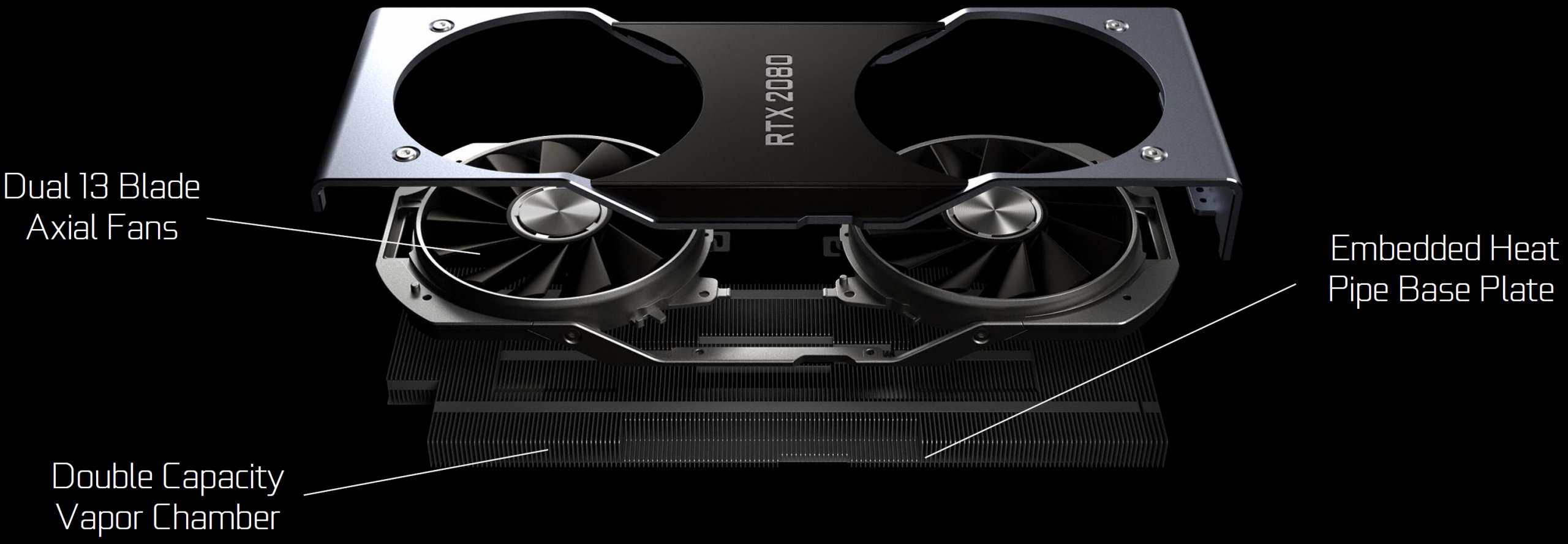
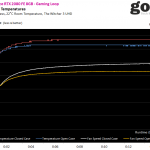
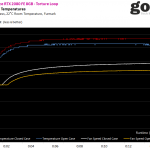
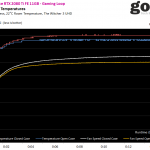
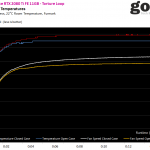
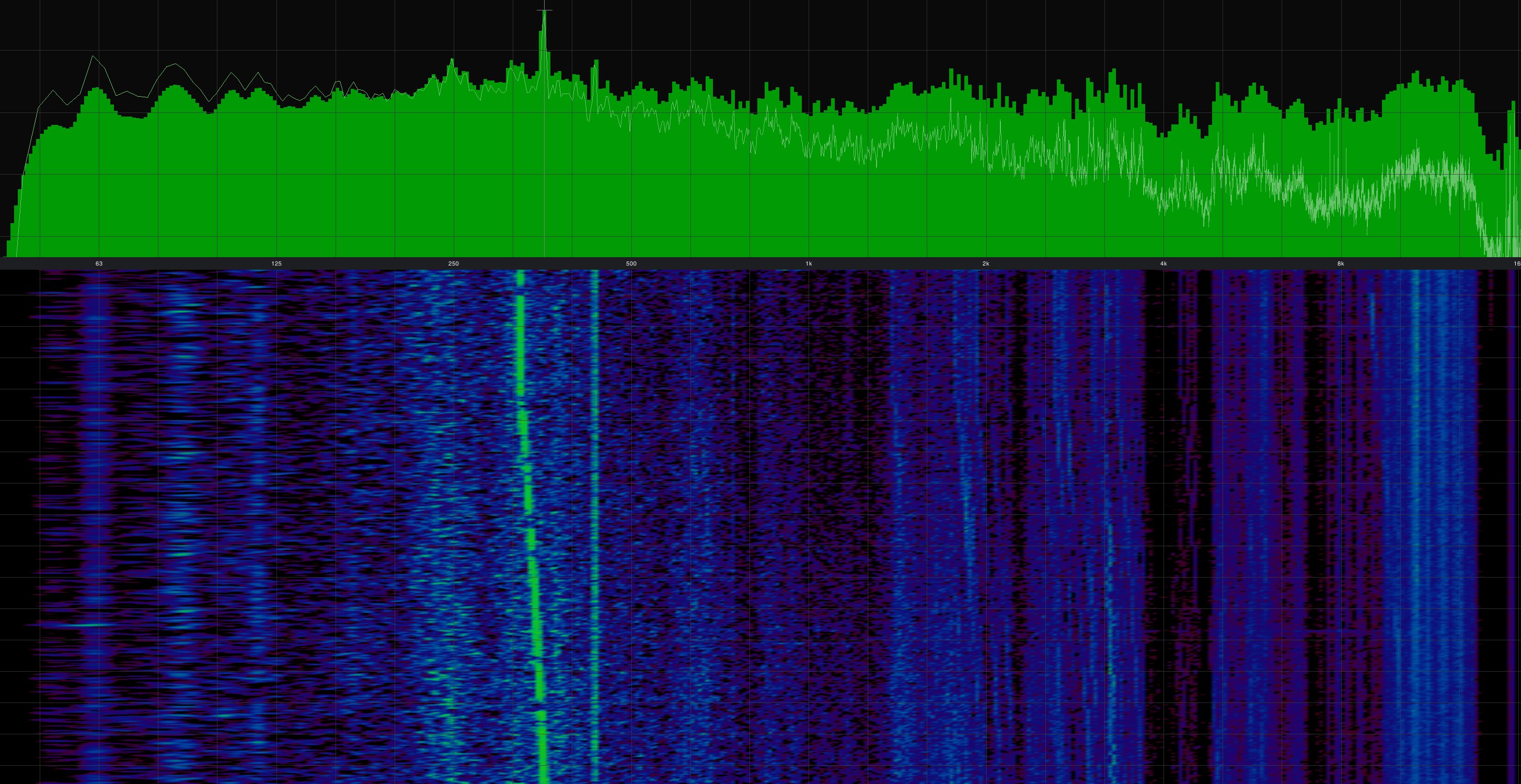


















Kommentieren